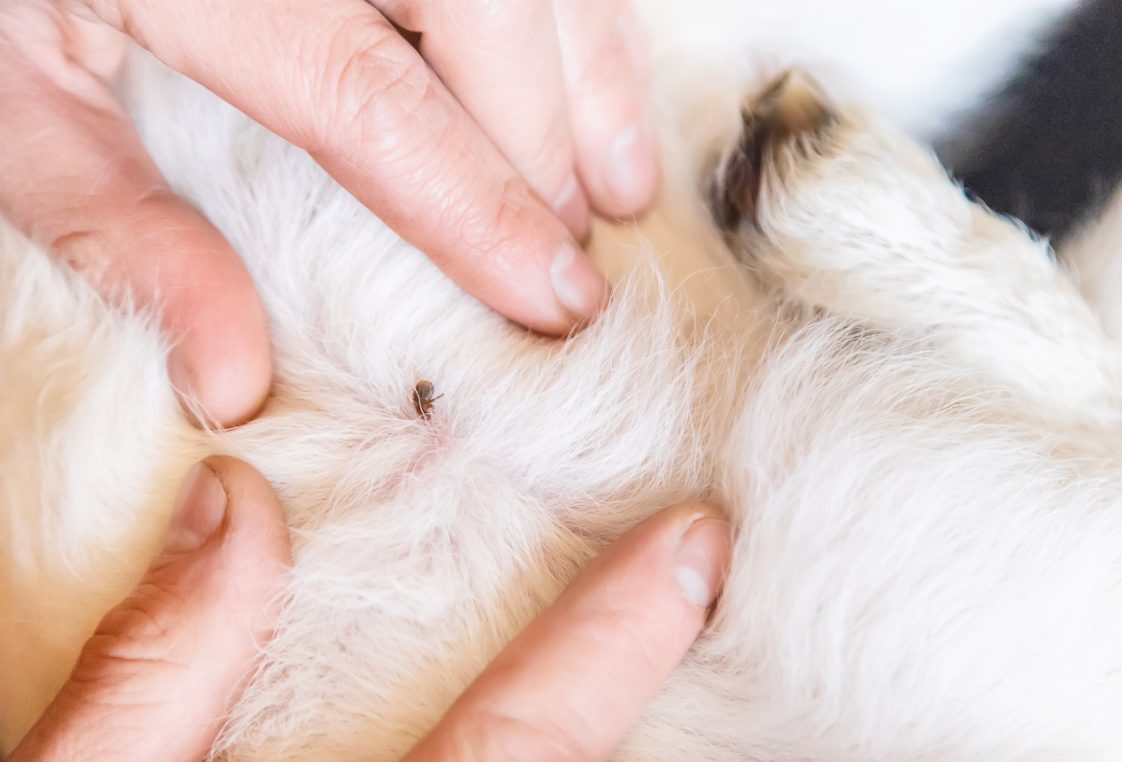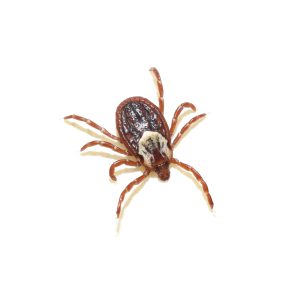Urban Extension

Ticks are hematophagous ectoparasites, which means they feed on the blood of their hosts. They are classified into two families: Argasidae (soft ticks) and Ixodidae (hard or scale ticks). Ticks pose direct and indirect economic challenges to goat producers by threatening their health and productivity. For example, tick infestation in goats can cause tissue damage, irritation, inflammation, hypersensitivity, abscesses, weight loss, lameness, anemia, and death in the worst cases.
Direct Economic Losses
- Damage to hides and skin: Infestation of animals with heavy ticks results in visible damage to the hides and skin.
- Blood loss and anemia: A high burden results in a lot of blood loss, eventually leading to anemia and general weakness of the animal.
- Allergic reactions: Ticks inject toxins through saliva that can result in severe allergic reactions in some animals.
- Energy loss: Energy loss results in fatigue due to constant movement and energy expended to eliminate the infestation.
- Chronic stress and immune depression: Continual irritation from bites may lead to chronic stress and depression of the immune system, eventually giving less resistance to other infections in the animal.
Indirect Economic Losses
- Treatment: Direct costs for the treatment of infestations and control of the tick population
- Acaricide contamination: Cost of animal product contamination with acaricides
- Tick-transmitted pathogens: Direct economic loss through diminished animal health and productive efficiency due to tick-borne diseases
Types of Ticks Affecting Goats
Several tick species can infest goats, such as:
American Dog Tick (Dermacentor variabilis): Widely distributed in the United States, they are vectors of diseases like Rocky Mountain fever. They infest areas around the ears, the eyes, and the neck region, as well as on the wool or hair on the back and rump.
Lone Star Tick (Amblyomma americanum): Identifiable by the white spot on the back; vector of diseases such as ehrlichiosis. They are seen around the head and ears, inside the ear canal, and around the edges. In the ventral region around the belly and groin, they are often found where the skin has been less disturbed.
Black-legged Tick (Ixodes scapularis): Also known as the deer tick, it can transmit Lyme disease. They are distributed at about the neck, shoulders, and the area where the head meets the body, and also are frequently present in dense wool or hair along the back, where they can go unnoticed.
- Figure 1. American Dog Tick.
- Figure 2. Lone Star Tick.
- Figure 3. Black-legged Tick.
Life Cycle and Behavior
Ticks have complex life cycles, passing through stages that demand certain conditions for development.
- Egg stage: A female tick lays thousands of eggs in some hidden spot, mostly among leaf litter or in the soil. These eggs hatch into larvae in 2 to 6 weeks, depending upon the temperature and humidity of their surroundings.
- Larva stage: The larvae, also known as seed ticks, are very minute and need a blood meal to develop further. They are found mainly on grasses or low vegetation, attaching to passing hosts. Fed larvae drop off and molt into nymphs 3 to 7 days after emerging.
- Nymph stage: Nymphs are larger than larvae but still must feed with a blood meal to develop into an adult after 1 to 2 weeks. They seek out hosts similarly to larvae and often in the same types of habitats. Upon feeding, the nymph drops off to molt into an adult.
- Adult stage: The adult is the largest and most easily recognizable stage of a tick’s life cycle. They are required to have a blood meal for reproduction. After a few days of blood meal, females start laying eggs, thus renewing the cycle. Depending on species and environmental factors, the adults may survive several months to over a year without a blood meal.
Behavior and Activity
- Ticks are most active during the warmer months of spring through fall, but may also be active year-round in mild climates. They are less active in cold weather and may enter dormancy or reduce activity during winter.
- Ticks quest, which means they climb up vegetation to wait for the passage of a host. They also possess specialized sensory structures that allow them to detect the presence of potential hosts.
- Humidity and temperature play a major role in the survival and activity of ticks. They prefer areas with high humidity, but different species tolerate varying conditions.
Seasonal Distribution of Ticks
Spring
During spring as temperatures rise and vegetation appears, tick activity heightens. It is thus the principal time that goats need careful monitoring. During this time, the ticks begin their quest for hosts after overwintering. Typically, tick populations hit their peak latest in late spring.
Summer
Summer provides the ideal environment for the propagation and growth of ticks due to the high temperatures and humidity levels. Tick activity is at its highest. Goats are highly susceptible during this time of the year, so regular tick management practices are necessary.
Fall
During the fall season, tick activity is reduced because of low temperatures. However, some ticks may remain active and seek to feed on hosts to complete their life cycle. Farmers should go ahead and check for ticks and control them if necessary.
Winter
Winter conditions generally inhibit the activity of ticks, but they may be active in milder climates. Overwintering ticks can be a problem as temperatures rise.
Economics of Tick Infestation
Disease Transmission
Ticks are vectors for various goat diseases that include:
- Anaplasmosis: This disease causes fever, anemia, and weight loss. It results in reduced milk production and possibly death.
- Babesiosis: A protozoal disease, babesiosis causes fever, anemia, and jaundice. The disease normally leads to a high loss in production and extremely high treatment costs.
- Ehrlichiosis: This disease causes fever, loss of appetite, and lethargy. Ehrlichiosis causes a reduction in weight gain and poor productivity.
Lower Weight Gain and Milk Production
- Lower weight gain: Infested goats could experience stunted growth, which diminishes the market value and productivity of the animals.
- Lower milk production: Lactating goats can suffer lower milk yields, which affects dairy operations and indirect income.
Secondary Infections
- Secondary infections: Ticks can inflict skin lesions, lacerations, or other wounds that may get infected and require further veterinary treatment, increasing expenses.
Acaricide Costs
- Acaricide costs: It is usual practice for a farmer to acquire a variety of acaricides or pesticides that kill ticks. These chemicals and their applications could become quite expensive. Treatment is usually regular and several acaricides are needed to prevent chemical resistance that can increase costs.
Labor Costs
- Labor costs: Methods to control ticks require regular inspections, frequent grooming, and applied control measures. These methods can increase labor costs compared to the total management burden.
Lower Sale Price
- Lower sale price: Goats that have been or are infected may be sold at lower prices at markets and auctions because most people perceive them as less healthy and productive.
Reduce Reproductive Performance
- Reduced reproductive performance: Ticks can affect reproductive performance in goats. The kidding percentage is generally low because breeding efficiency is compromised, resulting in reduced profits.
Financial Losses
- Financial losses: This cumulative effect of decreased production, increased management expenses, and depressed market value can equate to significant economic losses for the goat enterprise. Huge losses can impact the overall viability of operations, more so for small- and medium-scale farms.
Tick Management Strategies
Chemical Control
Acaricides are specific chemicals that kill ticks at the different stages of their life. They are available in various forms such as sprays, dips, and pour-ons. A variety of acaricides must be used in treatment rotations to avoid drug resistance.
Types of Acaricides and How to Use Them
- Pyrethroids (Permethrin): This acaricide comes in a spray, dip, or pour-on.
How it works: Permethrin disrupts the tick’s nervous system, paralyzing it and eventually killing it. - Organophosphates (Chlorpyrifos): This treatment is available as a spray, dip, or pour-on.
How it works: Chlorpyrifos inhibits ticks’ ability to utilize an enzyme crucial to their nerves, thus killing them. - Insect growth regulators (IGRs-Cyromazine): IGR insecticides are found in a spray (VetGun with Cyromazine) or as a pour-on.
How it works: Cyromazine prevents ticks from becoming adults and incapable of reproducing. - Amitraz: Amitraz comes in a spray or dip.
How it works: Amitraz acts on the feeding process and subsequent reproduction of ticks. It kills them and prevents further reproduction. - Ivermectin: Ivermectin is given orally or injected.
How it works: This antiparasitic drug helps control ticks and other parasites.
Rotating Acaricides to Avoid Resistance
- Month 1: Spray animals with Permethrin spray. Spray your animals to kill the ticks and clear them for some time.
- Month 2: Switch over to a Chlorpyrifos dip. Use this dip against any ticks that may not have been affected by Permethrin.
- Month 3: Use Cyromazine pour-on. This will prevent any new ticks from reaching adulthood.
- Month 4: Use the Amitraz dip. Apply this to handle ticks that may be resistant to the other treatments.
Repeat the cycle: After four months, start over with Permethrin spray to keep the ticks under control. By changing the types of acaricides you use, you help prevent ticks from getting used to any one treatment and keep your livestock safe from ticks.
Biological Control
Biological control is a reduction in the number of ticks by use of their enemies or helpful agents. The different types of biological control include the following.
Predatory insects are small creatures that eat ticks, such as:
- Predatory mites: Cheyletus mites, for example, hunt and eat ticks.
- Rove beetles: Aleocharinae beetles also eat ticks.
- Ants: Certain ants in the Formicidae family can help keep ticks under control.
- Ladybugs: These bugs of the Coccinellidae family may eat ticks.
- Wasps: Some wasp species, like the Polistes species, control ticks by reducing their populations.
In addition, some pathogens, such as bacteria, fungi, and protozoa can biologically control ticks.
Mechanical Control
Pasture management: Keep the pasture area clean with short grass. This will make it difficult for ticks to stay in an infested area. Control of ticks is possible by cutting the grass and burning its parts.
Environmental control: Construct tick-free zones in special pens or under shade.
Use repellents: Natural repellents like essential oils can be used to repel ticks, such as:
- Lavender oil: Lavender oil is a fragrant oil that ticks dislike and can be used to deter ticks.
- Peppermint oil: Peppermint oil has an overwhelming odor that ticks dislike. Add a few drops of peppermint oil into a spray bottle with water, and you will get a spray for the goats.
Eucalyptus oil: Eucalyptus oil is an oil that has a refreshing strong smell. Mix it with water and sprinkle over the goats to keep the ticks away. - Cedar oil: Cedar oil has a woody smell, and ticks tend to avoid this smell.
- Tea tree oil: Tea tree oil gives off a pungent smell and can be mixed with water to spray it on the goats.
More Information
Visit www.aces.edu for more information on small ruminant management. Also, visit the Facebook page AlabamaExtensionAAMU for timely information.




